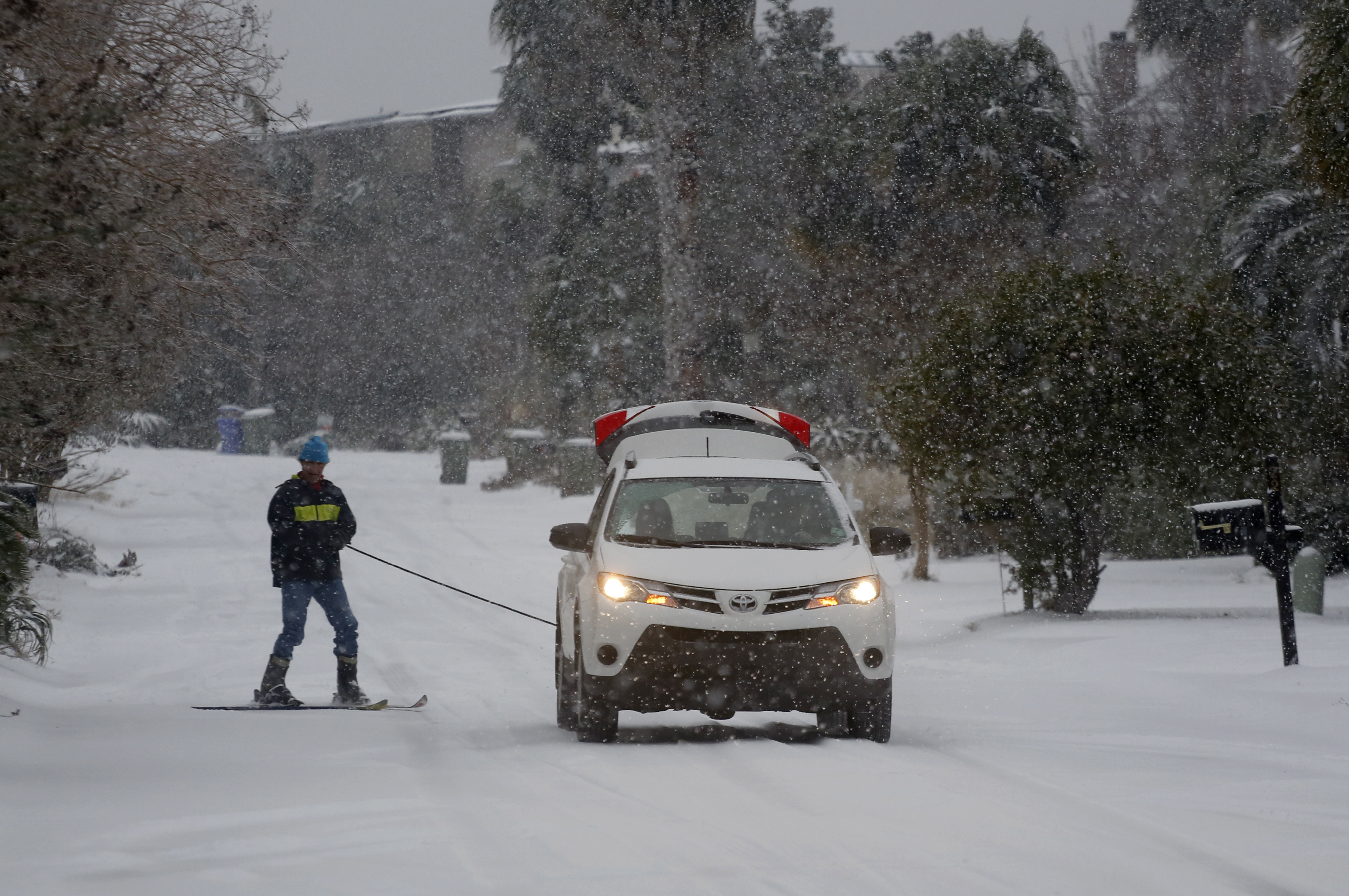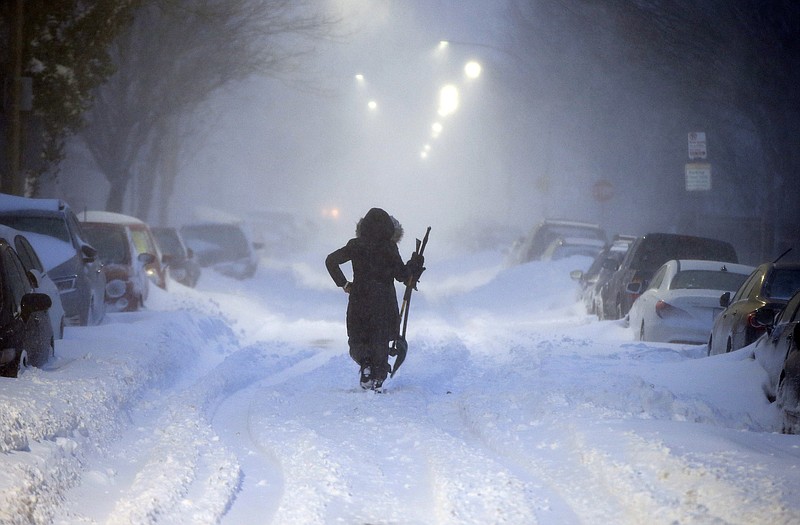WASHINGTON - When it comes to weather, it's hard to sound scarier than "bomb cyclone."
It's a version of a real weather term that applies to a massive winter storm that pulled together off the U.S. Southeast coast. But as fearsome as the storm is with high winds and some snow, it may not be quite as explosive as the term sounds.
Meteorologists have used the term "bomb" for storms for decades, based on a strict definition, said University of Oklahoma meteorology professor Jason Furtado.
After it showed up in a Washington Post story Tuesday, the weather geek term took on a life of its own on social media. The same thing happened four years ago with "polar vortex," another long-used weather term that was little known to the public until then.
 Finley Bork, 7, uses a boogie board, typically used on the beach, for sledding down a hill on a golf course at the Isle of Palms, S.C., Wednesday, Jan. 3, 2018. A brutal winter storm smacked the coastal Southeast with a rare blast of snow and ice Wednesday, hitting parts of Florida, Georgia and South Carolina with their heaviest snowfall in nearly three decades. (AP Photo/Mic Smith)
Finley Bork, 7, uses a boogie board, typically used on the beach, for sledding down a hill on a golf course at the Isle of Palms, S.C., Wednesday, Jan. 3, 2018. A brutal winter storm smacked the coastal Southeast with a rare blast of snow and ice Wednesday, hitting parts of Florida, Georgia and South Carolina with their heaviest snowfall in nearly three decades. (AP Photo/Mic Smith) Sid Rismani skis behind a car on Waterway Blvd. while heavy snow comes down on the Isle of Palms, S.C., Wednesday, Jan. 3, 2018. A brutal winter storm dumped snow in Tallahassee, Florida, on Wednesday for the first time in nearly three decades before slogging up the Atlantic coast and smacking Southern cities such as Savannah and Charleston, South Carolina, with a rare blast of snow and ice. (AP Photo/Mic Smith)
Sid Rismani skis behind a car on Waterway Blvd. while heavy snow comes down on the Isle of Palms, S.C., Wednesday, Jan. 3, 2018. A brutal winter storm dumped snow in Tallahassee, Florida, on Wednesday for the first time in nearly three decades before slogging up the Atlantic coast and smacking Southern cities such as Savannah and Charleston, South Carolina, with a rare blast of snow and ice. (AP Photo/Mic Smith)"Bombogenesis is the technical term. Bomb cyclone is a shortened version of it, better for social media," said Weather.US meteorologist Ryan Maue, who helped popularize polar vortex in 2014.
"The actual impacts aren't going to be a bomb at all," Maue said. "There's nothing exploding or detonating."
Storm intensity is measured by central pressure - the lower the pressure, the stronger. A storm is considered a "bomb" when the pressure drops rapidly - at least 24 millibars in 24 hours.
This storm has dumped freak snow on the Southeast, and all the way up the coast to Maine, and delivered near hurricane-force blistering winds. It will also usher in possible record-breaking cold.
Bomb cyclones draw air from polar regions after they leave. In this case, it means extra cold Arctic air because of where the polar vortex is, Furtado said.
Worldwide, about 40 to 50 "bomb cyclones" brew each year, but most are over open ocean and nobody but weather geeks notice, Maue said.
"We use the term bomb," Furtado said. "We know what it means, but I do think it gets a little hyped up."
